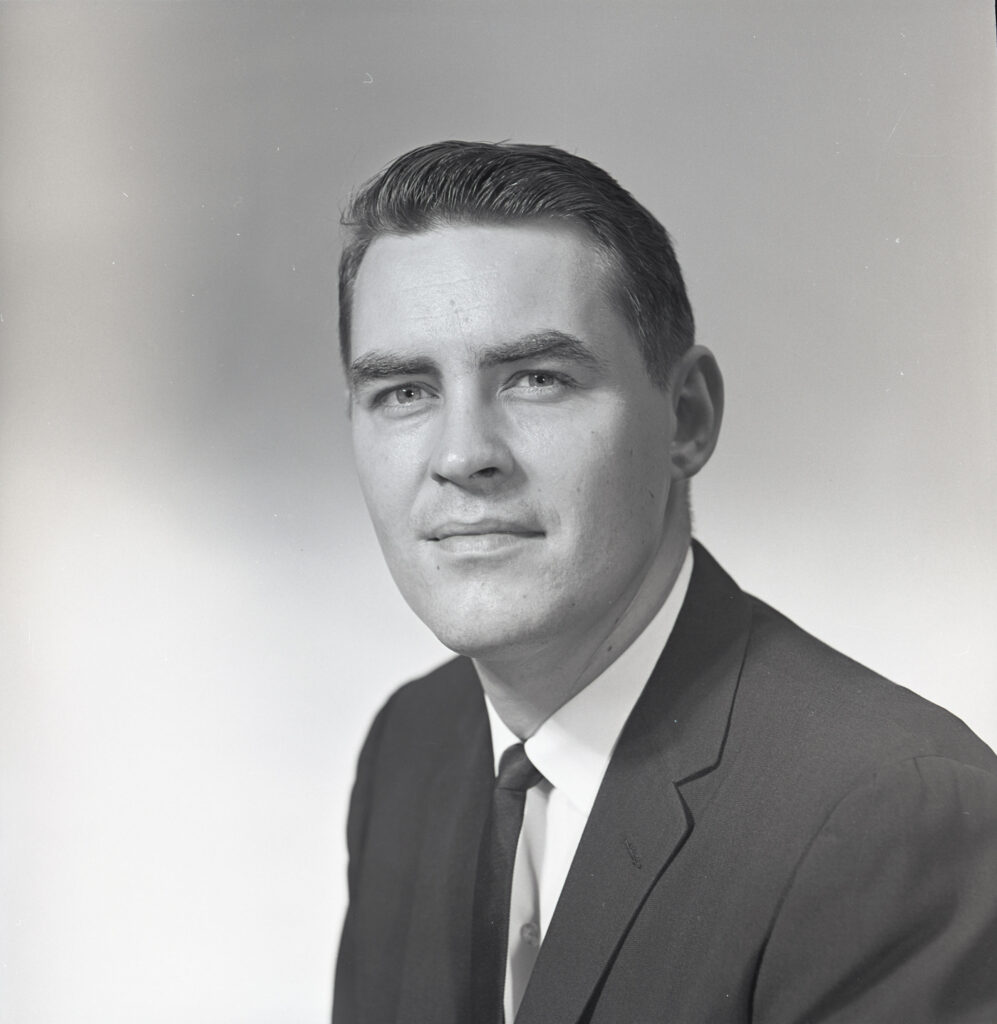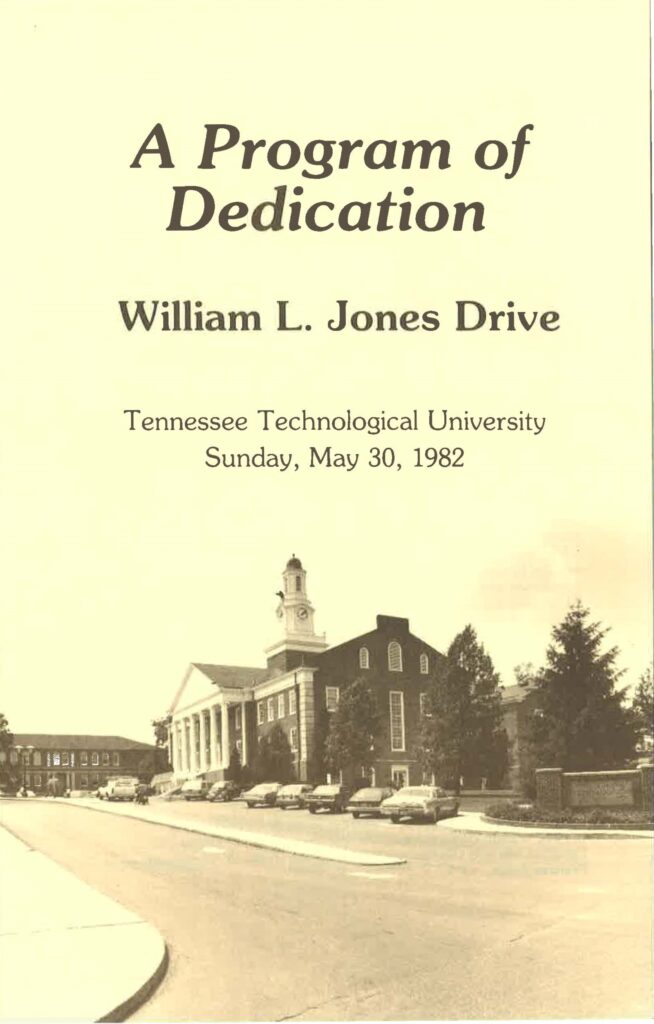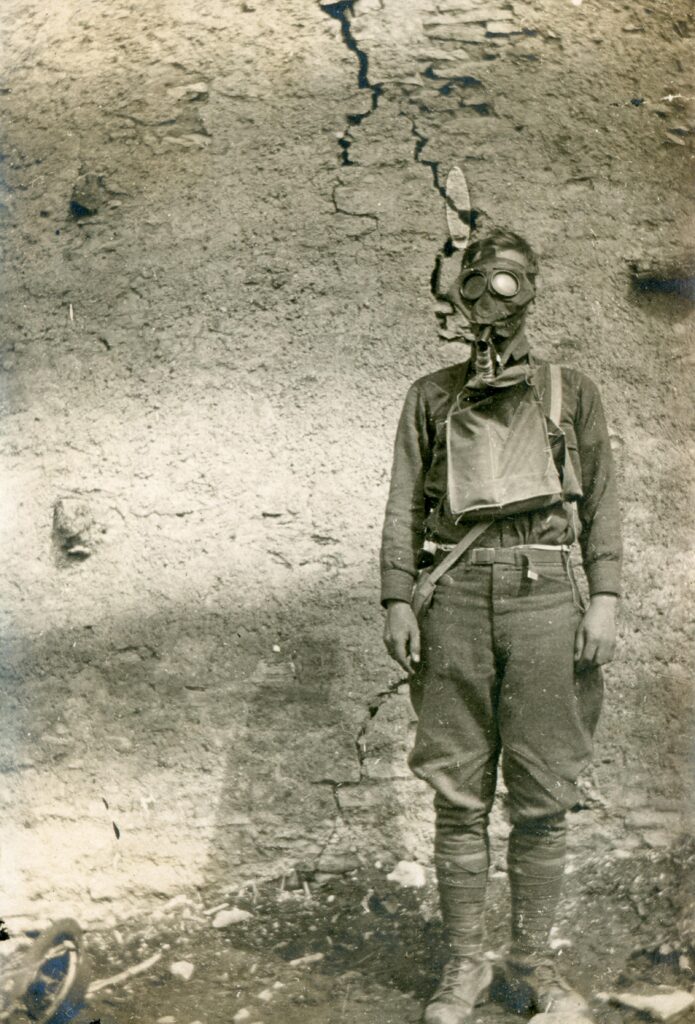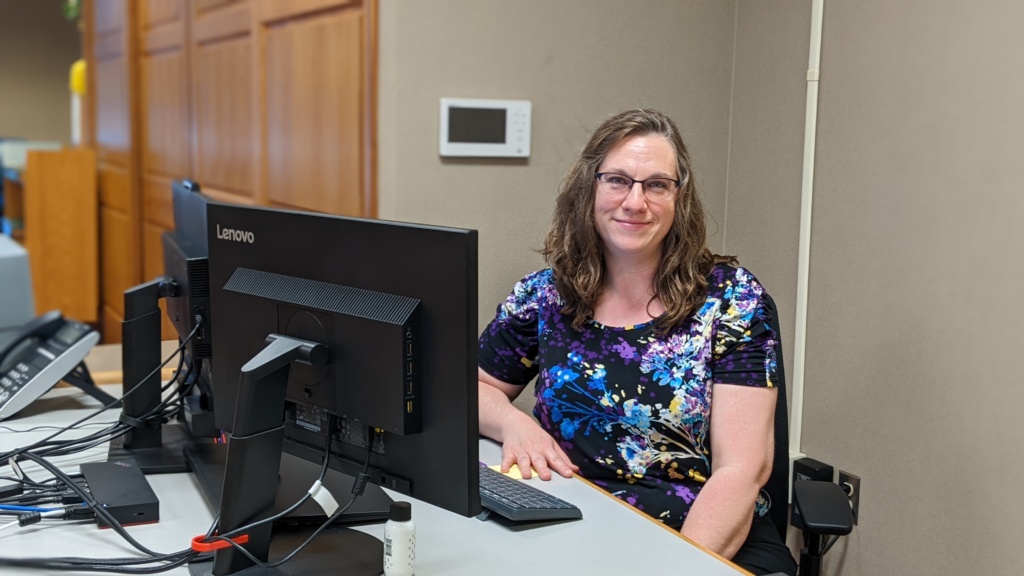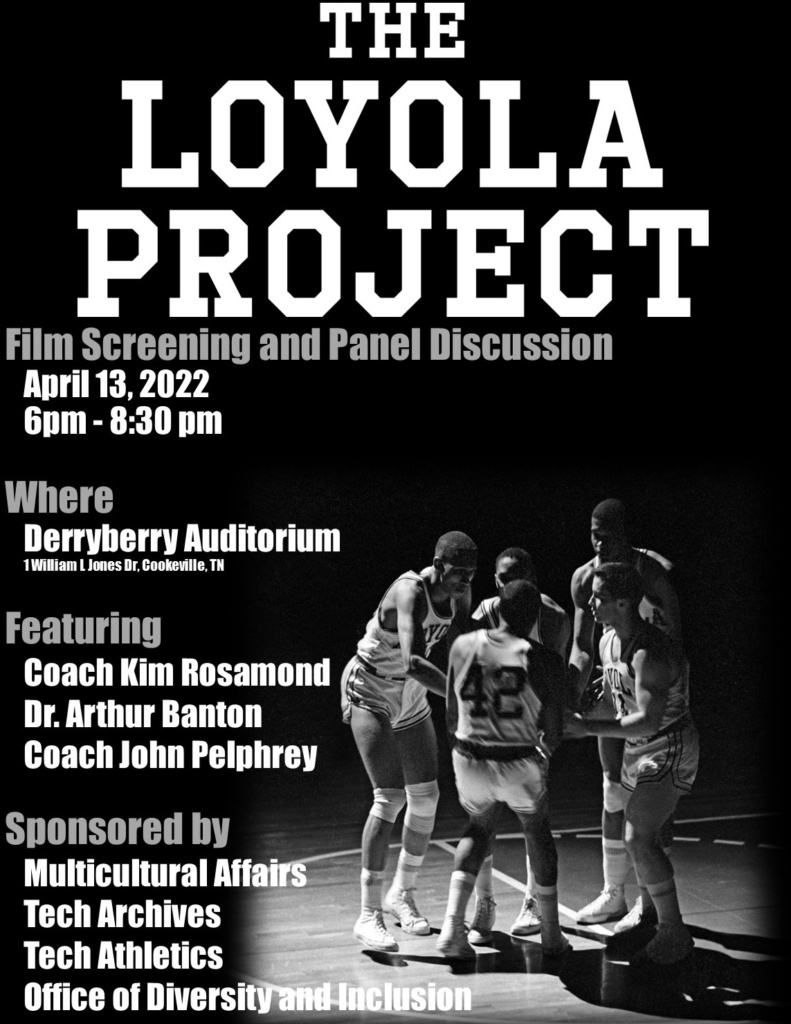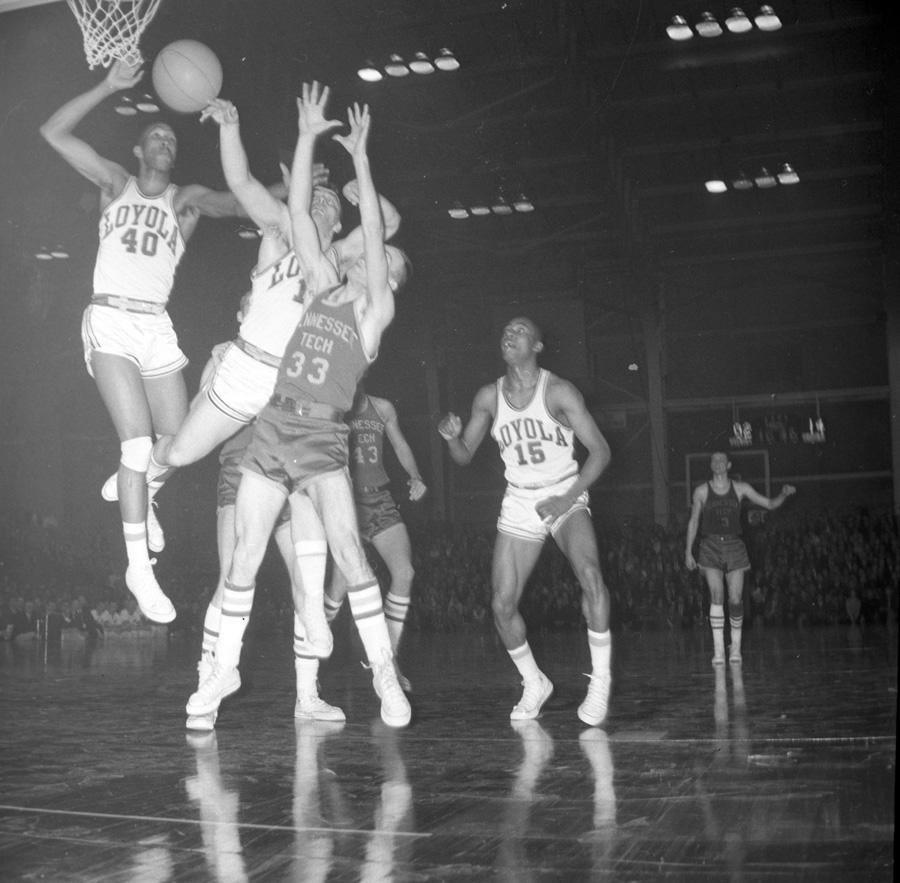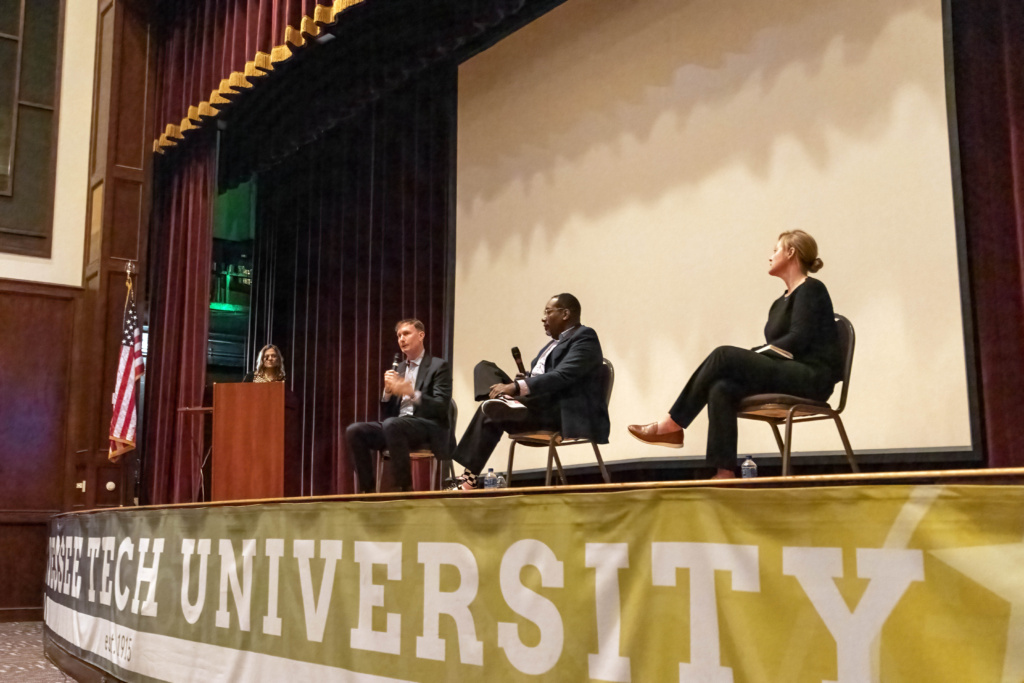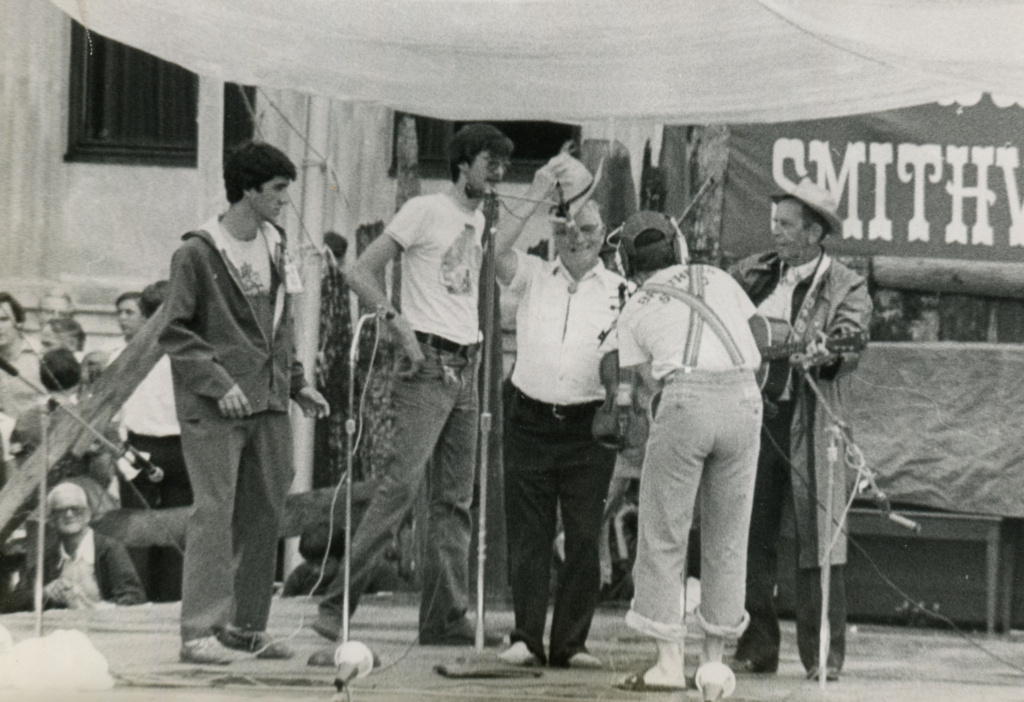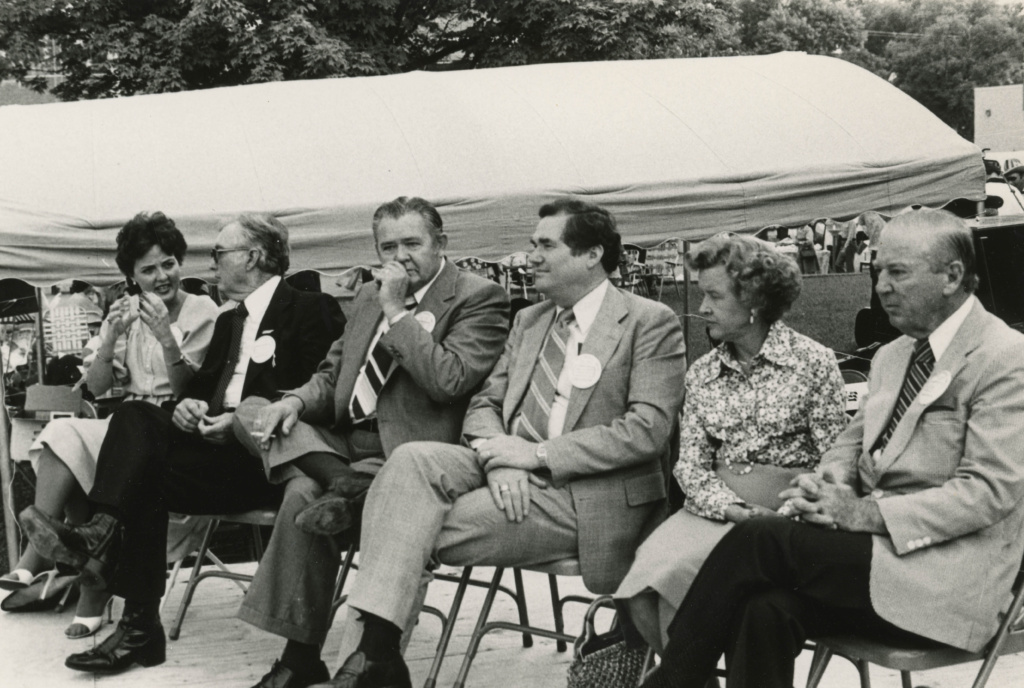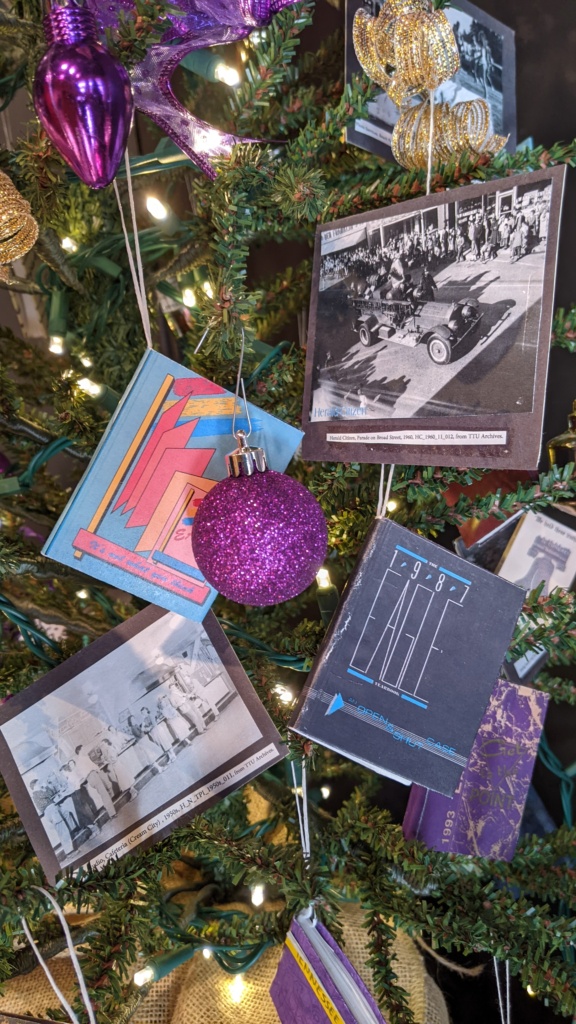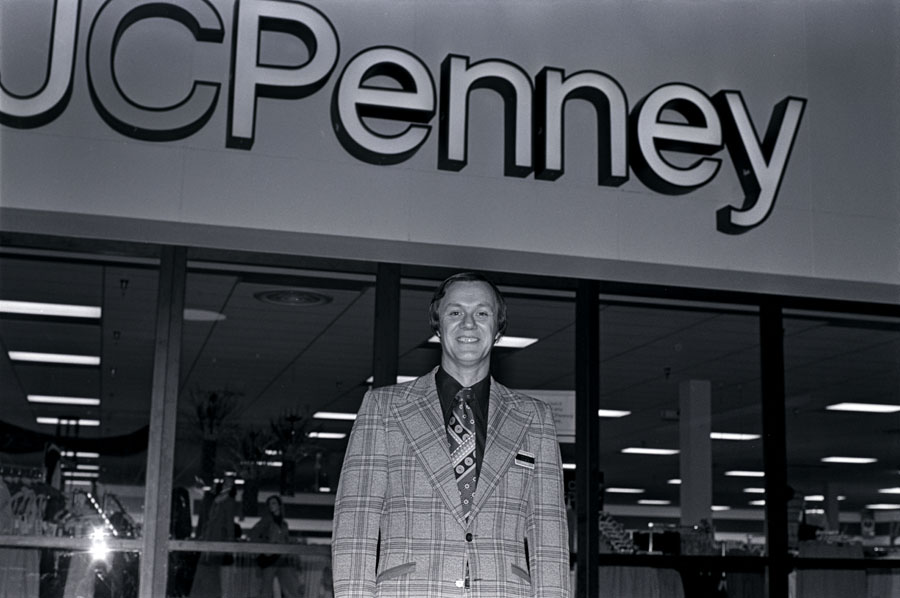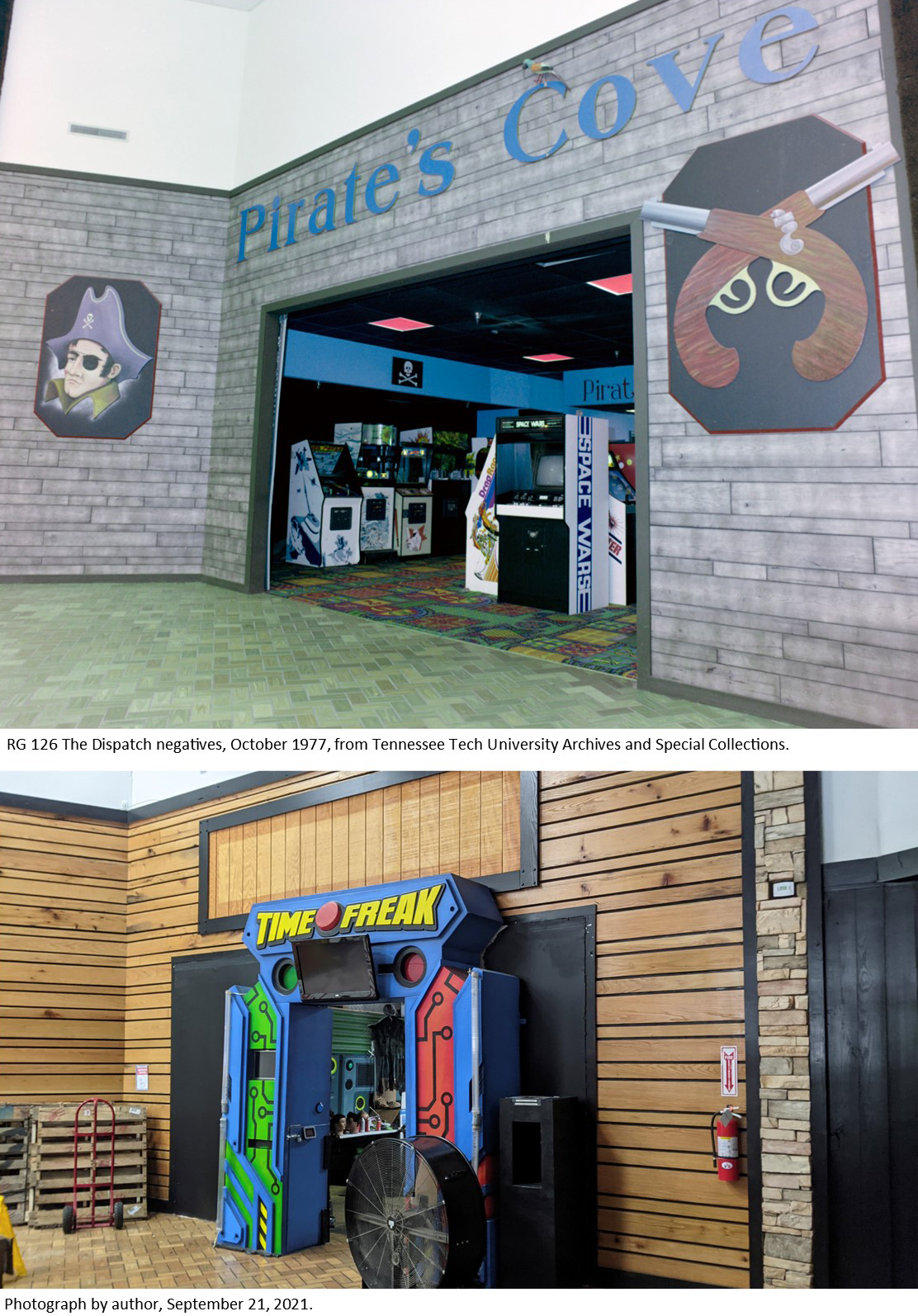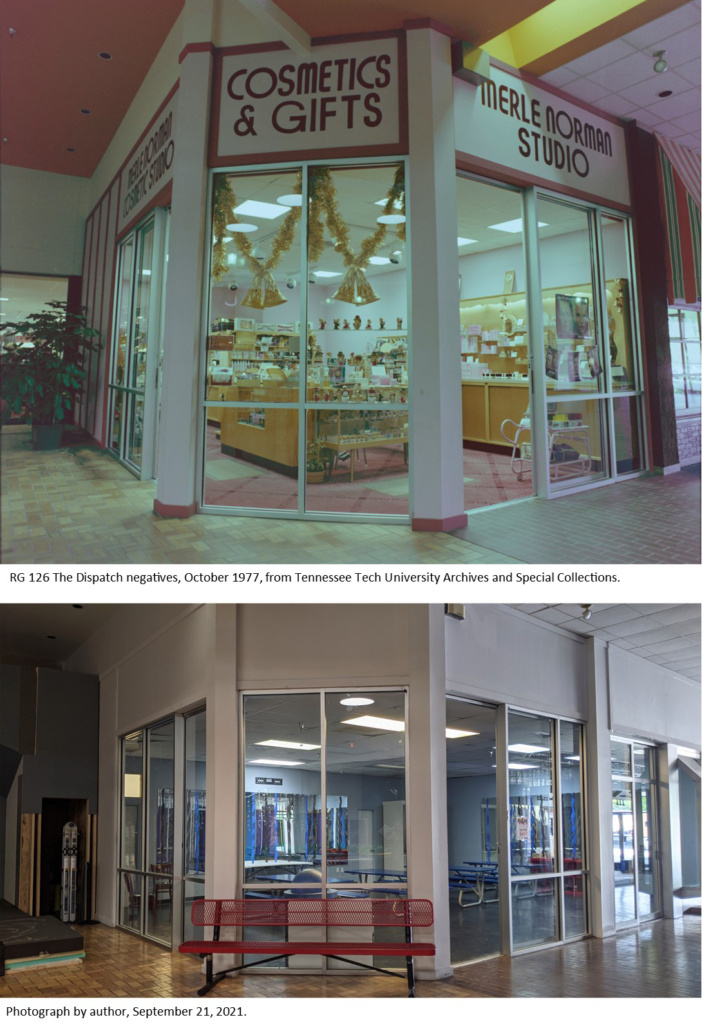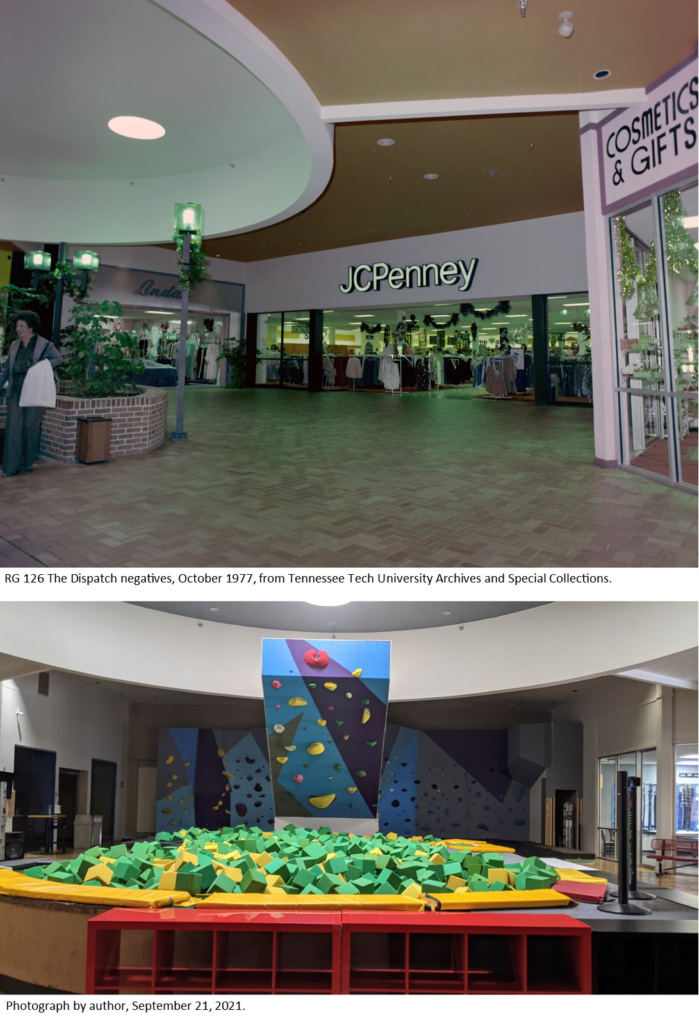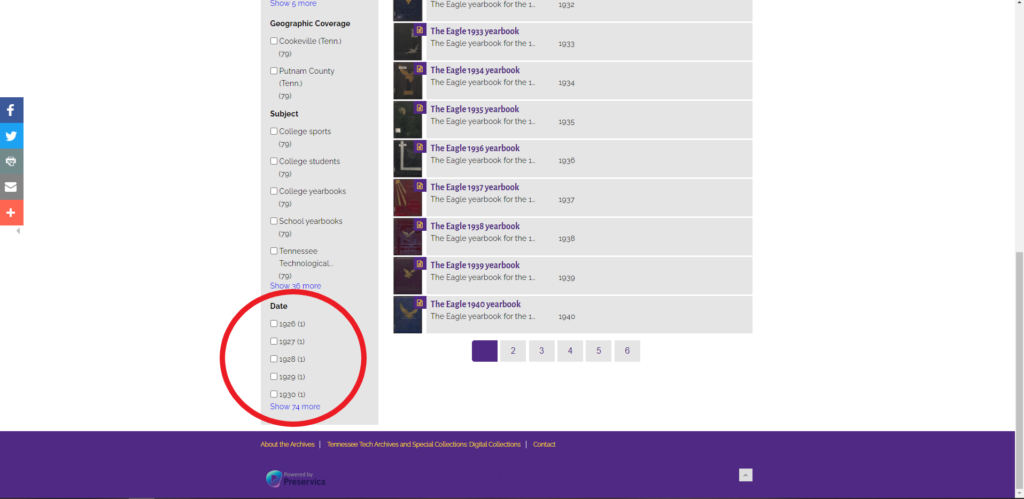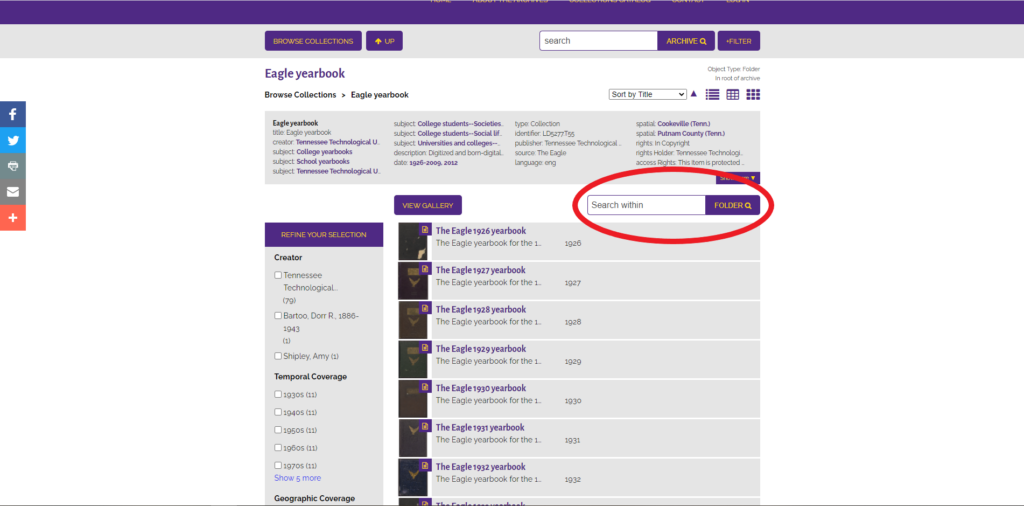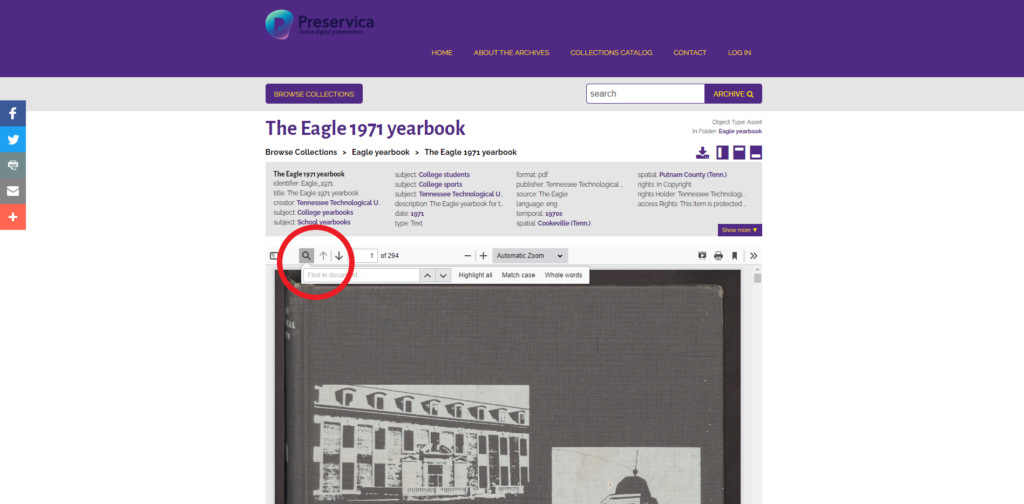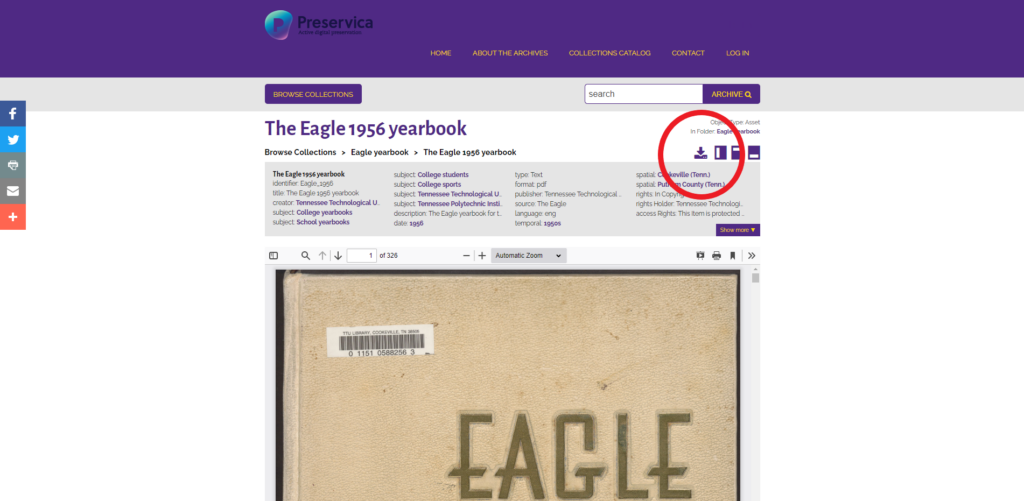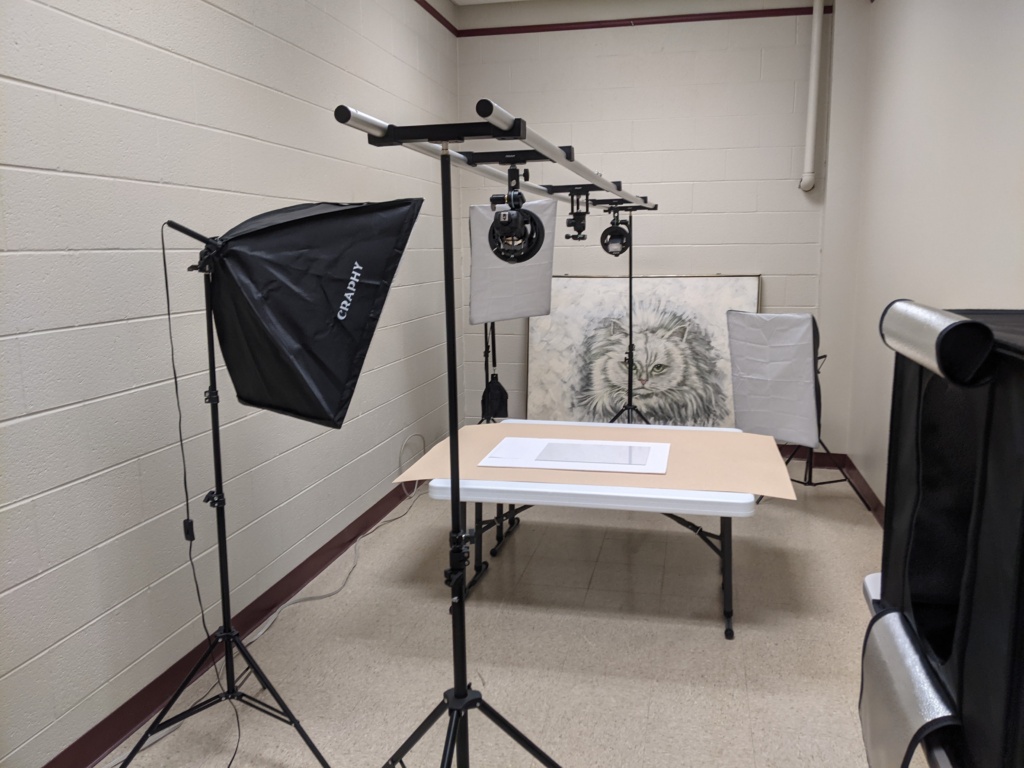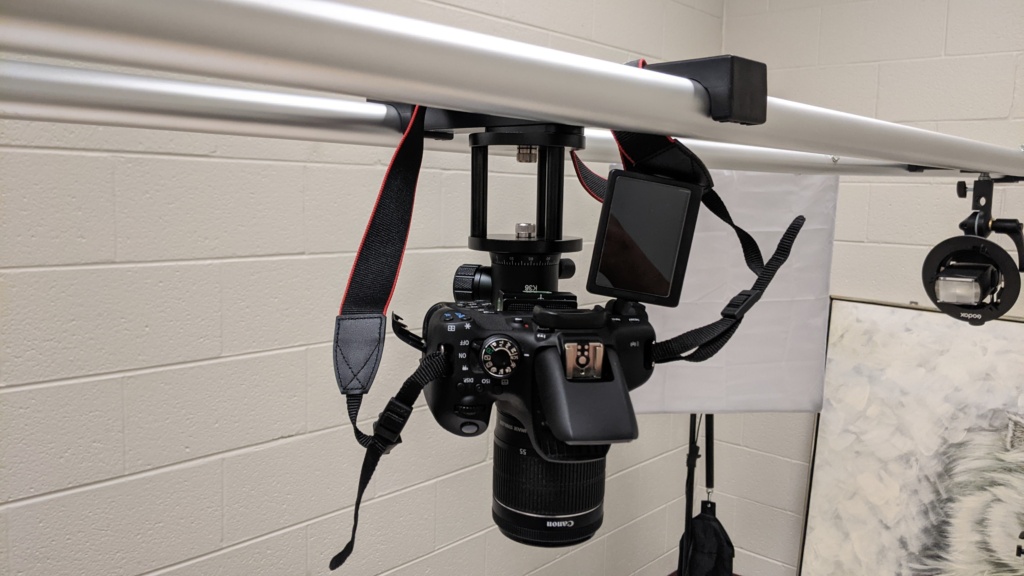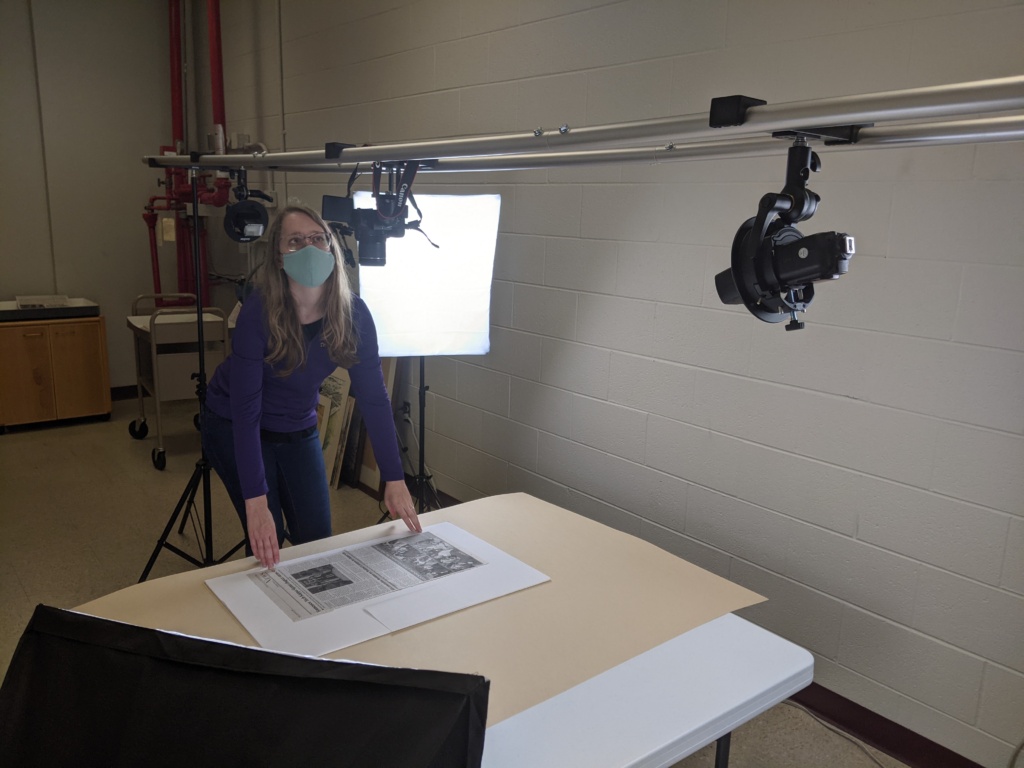Tech Archives recently received a scrapbook owned by Malcolm P. “Mutt” Quillen (1910-1995), a Tennessee Tech football, baseball, basketball, and track star, and later coach and administrator. Malcolm Patterson “Pat” Quillen, his son, donated the scrapbook to Tech Archives. For Tech Archives, the scrapbook filled a gap in a smaller collection of scrapbooks it held highlighting the career and retirement celebration of the famed Coach P.V. (Putty) Overall. The scrapbooks, created presumably by Overall, contain news clippings, correspondence, photographs, and various Tennessee Polytechnic Institute football ephemera such as programs and schedules dating from 1934-1974. Overall gave the one scrapbook to Malcolm P. “Mutt” Quillen because the scrapbook highlighted Malcolm’s years when he played for Tennessee Tech.
Preston Vaughn (P.V.) “Putty” Overall (1897-1974) was born in Snell, Tennessee. Overall served in World War I in the Company “C,” 516th Army Engineers. He began his sports career at Middle Tennessee Normal School, later Middle Tennessee State University. He attended and graduated George Peabody College and lettered in football at Vanderbilt in 1921. He went on to work shortly at Livingston Academy in 1922 with Helen Marie Blanchard, whom he married in 1923.
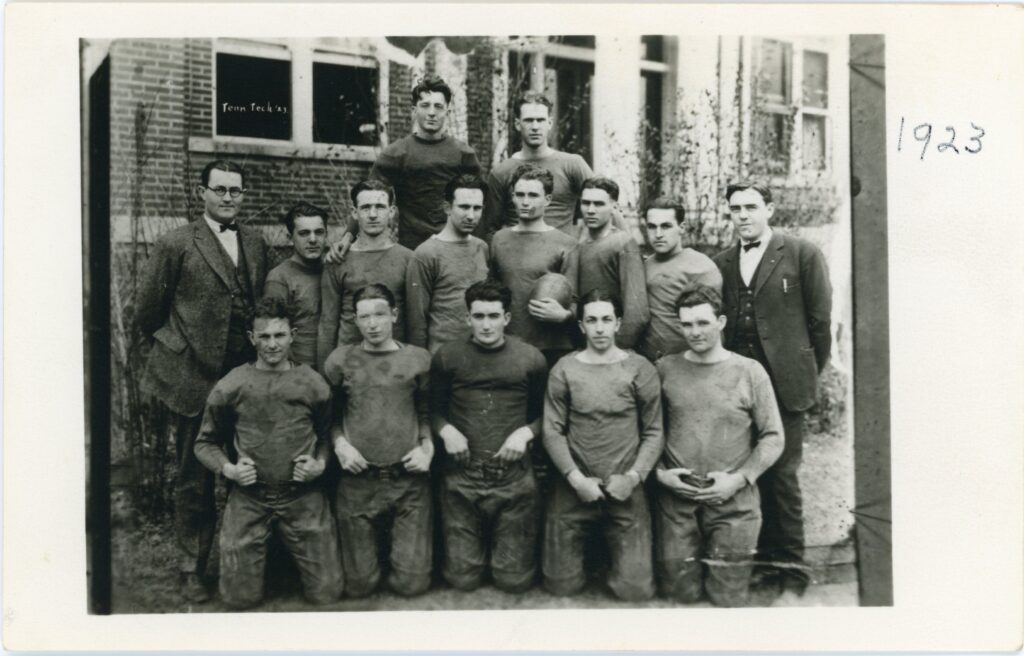
Overall began his coaching career at Tennessee Tech in 1923. He coached basketball, baseball, and football, but is known for football. In 1946, he retired his first time from coaching to continue the growth of the Physical Education Department. His best football seasons were in 1928 and 1932, but in 1952, Overall returned to coaching. He retired the second time in 1953 on top after the Golden Eagles’ team played East Texas State in Orlando, Florida in the Tangerine Bowl, and the Golden Eagles went to the OVC championship with Western Kentucky, and even still the Golden Eagles beat MTSU (46-13), a long rivalry Overall was instrumental in initiating.
The early athletic program at Tennessee Tech lacked the essentials such as fields and facilities (campus map). Football was played on the old fairgrounds. Athletic scholarships were nonexistent and there was a small football team. Overall helped build the athletic program at Tennessee Tech and he organized the biology program at Tennessee Tech, starting with zoology and botany. He chaired and organized the Department of Health and Physical Education in 1938. He was also the first president of the Tennessee College Physical Education Association.
Overall retired from all positions at Tennessee Tech in 1967 but during his time at Tennessee Tech, he built the athletic program at Tennessee Tech from fledgling to Golden Eagle. Middle Tennessee State University honored Overall a “Distinguished Alumnus in 1961. Overall was inducted into the Tennessee Sports Hall of Fame in 1966-1969, and was honored in 1966. He was one of the first inductees into the Tennessee Tech Hall of Fame in 1975. Overall has had two Tennessee Tech athletic fields named in his honor, the most recent is Overall Field in Tucker Stadium. He was inducted into the OVC Hall of Fame in 1981.
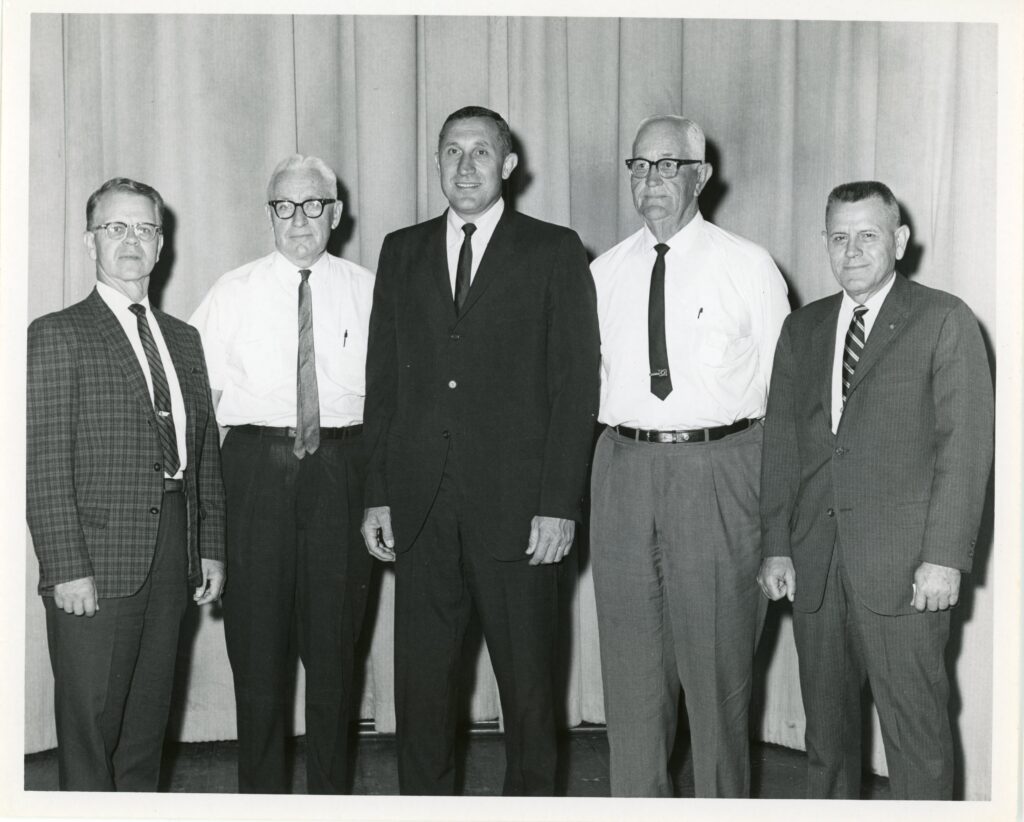
Malcolm Quillen’s success did not pale in comparison to Overall. He was a successful athlete in the 1930s and coach at Tennessee Tech in the 1950s. He was inducted into Tennessee Tech Sports Hall of Fame in 1976, the OVC Sports Hall of Fame in 1984, and Tech’s baseball playing field is named in his honor. He was Tennessee Tech’s Dean of men from 1958 to 1975 and a golf coach in the late 1970s. Both he and Everett Derryberry are in the Columbia Central High School Sports Hall of Fame.
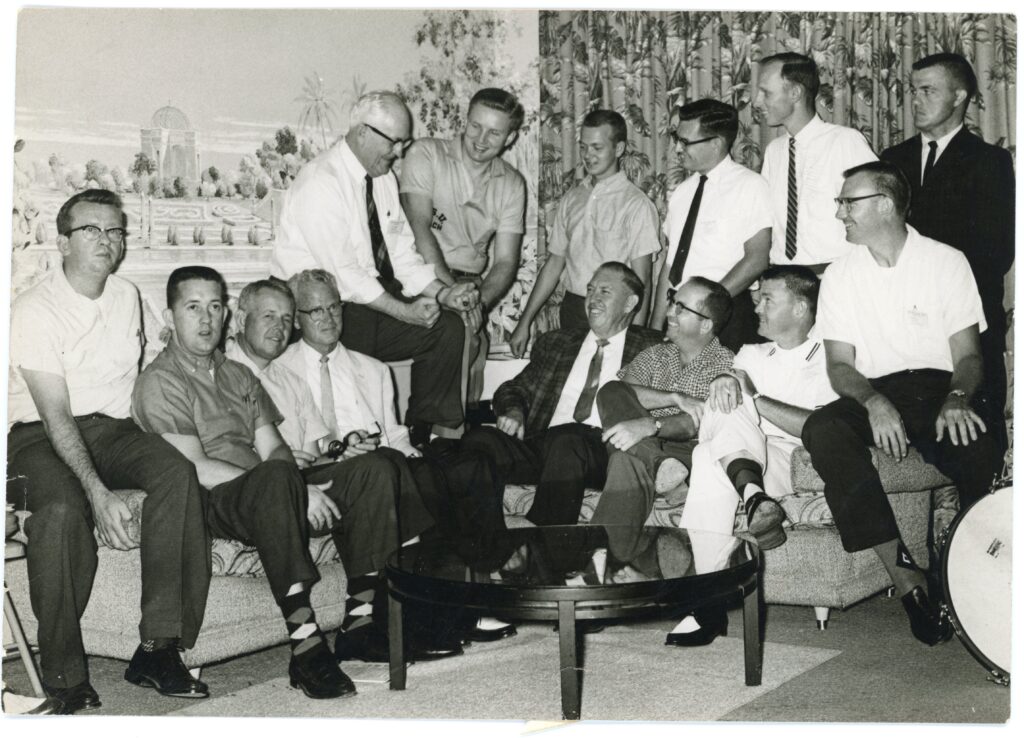
The scrapbook, donated by Pat Quillen, and the collection held by the archives, highlight both of these men’s extraordinary sports’ careers at Tennessee Tech. Students and athletes appreciated Overall’s character and life lessons. From Overall, “Athletics should supplement the classroom teaching in giving too our society boys and girls that have first hand [sic] experience in learning the values of honesty, self-denial, loyality [sic], respect for others and a willingness to assume and discharge their obligations to God and man.” The collection and scrapbooks contain numerous accolades written to Overall from former players before and at the time of his retirement. Access a selection of these here. The scrapbook Overall gifted Quillen can be accessed here. We will be digitizing the remaining scrapbooks this year so check back if you enjoy it!
Bibliography
Columbia Central High School Athletics. Hall of fame inductees. Columbia Central High Web site. https://columbiacentralhigh.mauryk12.org/athletics/c_h_s_sports_hall_of_fame/hall_of_fame_inductees. Updated 2022. Accessed September 26, 2022.
Corhern T. 100th anniversary: The pre-varsity years (1916-21). TTU Sports Information Web site. https://www.ttusports.com/sports/fball/2022-23/releases/20220602p6t3fm. Accessed September 26, 2022.
Eagle yearbook staff. The eagle yearbook. Tennessee Technological University; 1974. https://tntech.access.preservica.com/uncategorized/IO_9ee0d6ed-eac1-4115-9ba0-c627285dd219/ Accessed September 26, 2022.
Lewis County Herald. Malcolm Patterson “Mutt” Quillen Sr. Find A Grave Web site. https://www.findagrave.com/memorial/61705362/malcolm-patterson-quillen. Updated 1995. Accessed September 26, 2022.
OVC Sports Hall of Fame. Malcolm P. Quillen. Ohio Valley Conference Web site. https://ovcsports.com/hof.aspx?hof=22&path=&kiosk=. Updated 2022. Accessed September 26, 2022.
Tennessee tech’s unbeaten team. The Nashville Banner. November 22 1932:7.
OVC Sports Hall of Fame. P.V. Overall. Ohio Valley Conference Web site. https://ovcsports.com/hof.aspx?hof=19. Updated 2022. Accessed September 26, 2022.
RG 7 Preston Vaughn “Putty” Overall Scrapbooks, Tennessee Tech University Archives and Special Collections.
Tennessee Tech Athletics. Malcolm P. “Mutt” Quillen. Tennessee Tech University Hall of Fame Web site. https://www.ttusports.com/Hall_of_Fame/1976/Malcolm_P._Quillen_HOF?view=bio. Updated 2022. Accessed September 26, 2022.
Tennessee Sports Hall of Fame. Overall, Preston Vaughn “Putty”. Tennessee Sports Hall of Fame Web site. https://tshf.net/halloffame/overall-preston-vaughn-putty/. Updated 2022. Accessed September 26, 2022.
TTU Sports Information. Preston V. “Putty” Overall. Tennessee Tech University Hall of Fame Web site. https://www.ttusports.com/Hall_of_Fame/1975/Preston_V._-Putty-_Overall_HOF?view=bio. Updated 2022. Accessed September 26, 2022.
TTU Sports Information. Tech legends Derryberry, Quillen named to Columbia central inaugural athletic hall of fame. Tennessee Tech University Sports Web site. https://www.ttusports.com/general/2018-19/releases/20180810o3540e. Updated 2018. Accessed September 26, 2022.

